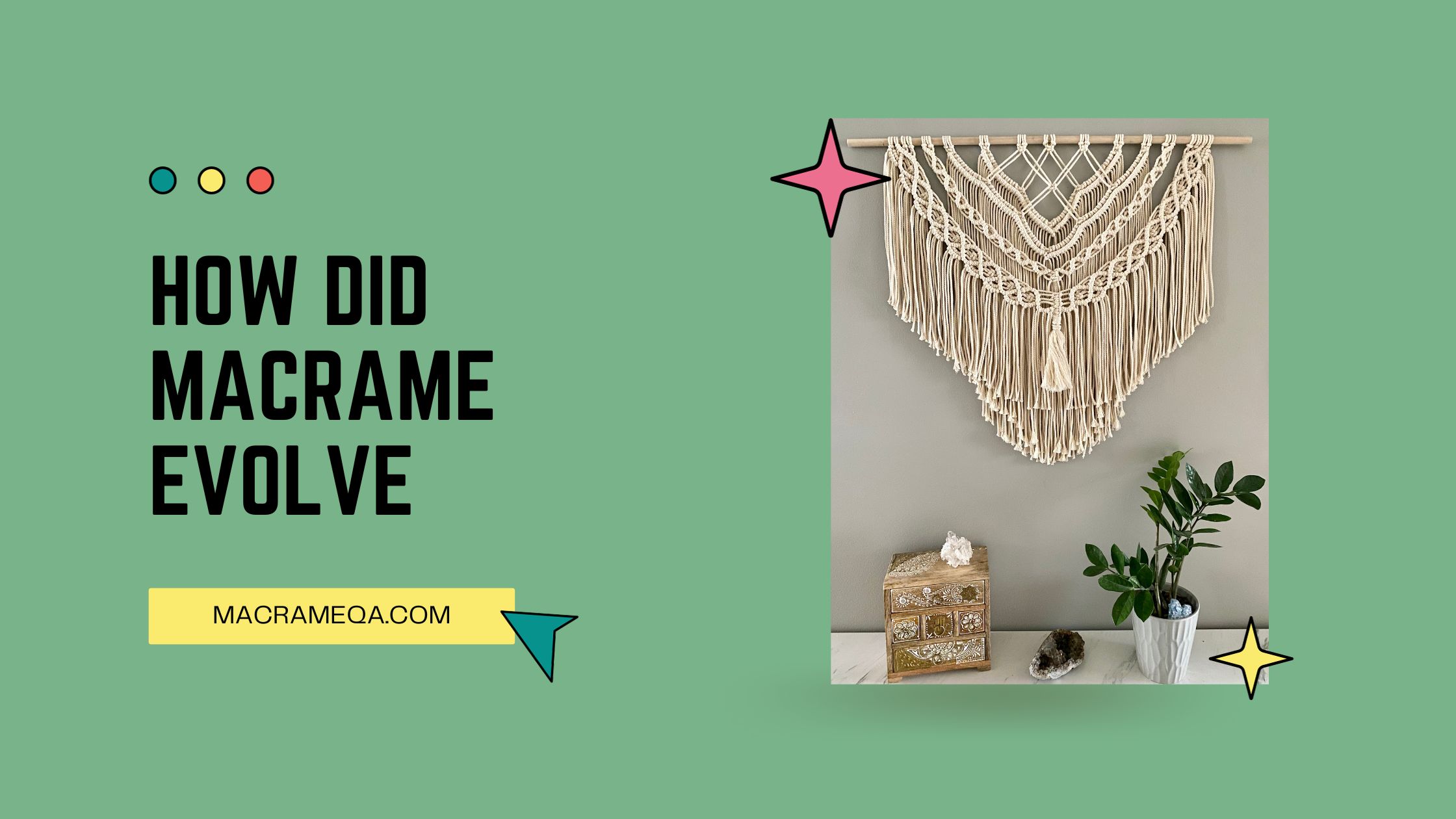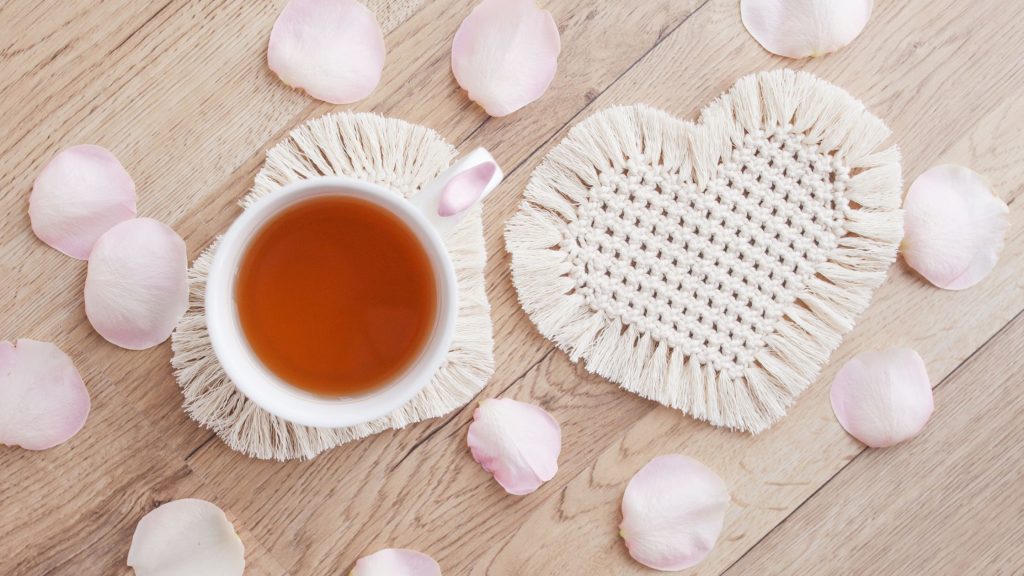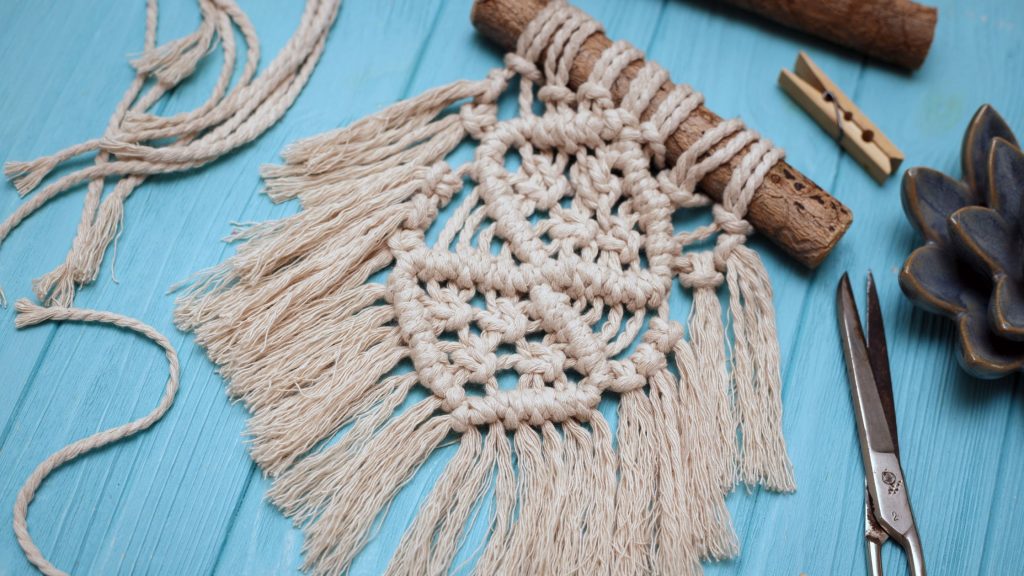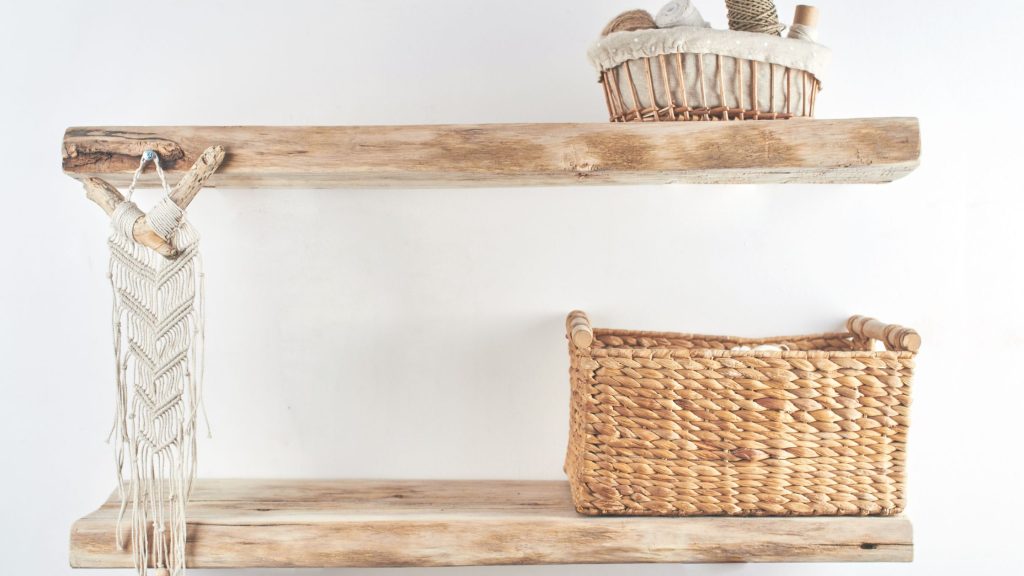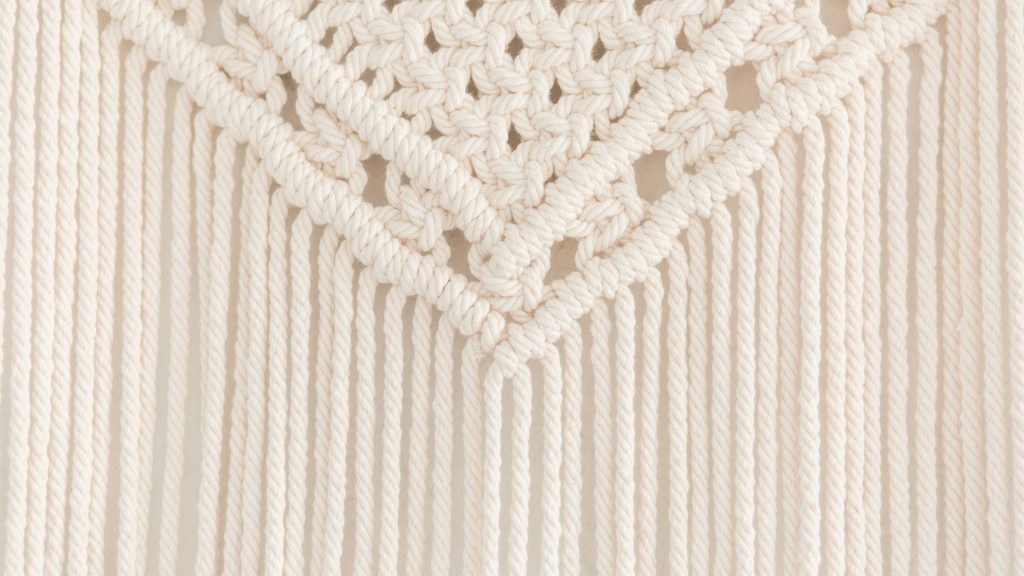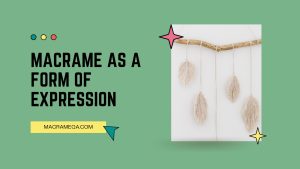Imagine a world where intricate knots and delicate rope creations adorned the walls of humble dwellings, telling stories and showcasing the creativity and skill of their creators. Macrame, the art of knotting cord or thread in patterns to make decorative pieces, has a rich history that spans centuries. But how did this practical craft, once used for functional purposes such as holding objects together or making clothing, transform into an art form? In this article, we will explore the fascinating journey of macrame’s evolution and uncover the factors that propelled it from a simple craft to an esteemed artistic expression.
Origins of Macrame
Macrame, derived from the Arabic word “migramah” meaning fringe, has a rich history that spans different cultures and periods. Its origins can be traced back to ancient civilizations, where it was primarily used as a practical craft for making useful items like nets, ropes, and even clothing.
Ancient History
The art of macrame dates back thousands of years, with evidence of its existence found in ancient Babylonian and Assyrian civilizations. These early cultures utilized macrame techniques to create intricate textiles, such as the fringed shawls and decorative waistbands seen in their artwork.
Spread of Macrame
As trade and cultural exchange expanded, macrame techniques found their way to other parts of the world. The craft became popular in regions such as China, India, and Persia, each adding their unique touch to the art form. Macrame was also introduced to Europe through trade routes, where it further evolved and gained recognition.
Practical Uses of Macrame
The practicality of macrame made it indispensable in various aspects of daily life. Fishermen relied on macrame nets for their livelihood, and sailors utilized them to create intricate knotwork for securing items on ships. Macrame was also used to make bags, hammocks, and even horse reins. Its versatility and durability make it perfect for a range of practical purposes.
Macrame as a Decorative Craft
Over time, macrame began to transcend its practical origins, transforming into a decorative craft appreciated for its intricate designs and delicate beauty.
Renaissance Period
During the Renaissance period, macrame gained prominence as a decorative art form in Europe. Royalty and nobility adorned their palaces and castles with macrame curtains, bed hangings, and wall tapestries. These intricate pieces showcased the creativity and skill of macrame artisans in creating intricate patterns using various knotting techniques.
Victorian Era
The Victorian era saw a resurgence of interest in macrame, with the craft becoming immensely popular among middle and upper-class households. Macrame lace became a symbol of luxury and elegance, adorning clothing, curtains, and upholstery. Delicate macrame collars and cuffs added a touch of refinement to fashionable attire, further propelling the craft’s popularity.
Arab and African Influence
Arab and African cultures also played a significant role in shaping the decorative aspect of macrame. Their rich tradition of using ornate macrame designs in architecture, clothing, and home decor influenced the European macrame styles. These cultural exchanges resulted in the infusion of intricate patterns and exotic motifs into the craft, enhancing its decorative appeal.
Macrame in the 20th Century
The 20th century witnessed a shift in the perception and application of macrame, as it ventured into the realm of art and self-expression.
Arts and Crafts Movement
The Arts and Crafts movement, which emerged in the late 19th and early 20th centuries, celebrated the value of handmade crafts and the beauty of natural materials. Macrame fitted seamlessly into this philosophy, and artists embraced the craft to create unique pieces that blended functionality with aesthetic appeal. Macrame curtains, lampshades, and room dividers became popular features in the homes of those who embraced the Arts and Crafts ethos.
Modernist Influence
With the rise of modernism, macrame underwent yet another transformation. Artists began experimenting with unconventional materials and abstract designs, pushing the boundaries of traditional macrame. The focus shifted from purely decorative aspects to more sculptural and artistic expressions. Macrame sculptures featuring organic forms and intricate interweaving became increasingly prevalent, showcasing the versatility and potential of the craft as an art form.
Macrame as a Hobby
Simultaneously, macrame gained popularity as a hobby among the general public. Craft enthusiasts embraced macrame as a creative outlet, with instructional books and magazines providing step-by-step guides for creating various macrame projects. The accessibility of macrame as a craft gave people the chance to engage with their artistic side and create unique handmade pieces for their homes or personal adornment.
Revival of Macrame in the 1960s
The 1960s brought radical cultural shifts and counterculture movements that saw Macrame experience a resurgence in popularity, particularly among the hippie subculture.
Cultural Shifts and Counterculture Movements
The 1960s was a time of social and cultural change, with many individuals seeking alternative lifestyles and pushing against societal norms. Macrame, with its bohemian aesthetic and do-it-yourself ethos, found favor among the counterculture movement. The craft’s affordability and ease of learning made it accessible to those seeking a way to express their artistic inclinations outside of mainstream conventions.
Macrame in the Hippie Culture
The hippie counterculture embraced macrame as a means of self-expression and individuality. Macrame plant hangers, wall hangings, and jewelry adorned their communal spaces and themselves. With its earthy tones and natural materials, macrame became a symbol of the bohemian lifestyle, showcasing their connection to nature and desire for a more sustainable way of living.
Macrame’s Association with Bohemian Style
Macrame’s association with bohemian style extended beyond the hippie culture and permeated mainstream fashion and interior design. Its intricate designs and handmade quality added a touch of authenticity and uniqueness to spaces and outfits. Macrame wall hangings, curtains, and their incorporation into fashion garments became sought-after elements in creating a bohemian-inspired aesthetic.
Exploration of Macrame as an Art Form
As the 20th century progressed, macrame continued to evolve as artists pushed the boundaries of the craft and explored its potential as a contemporary art form.
Artists’ Experimentation
Macrame artists embarked on a journey of experimentation, exploring new techniques, and pushing the limits of traditional macrame. Artists like Roberta Plottel and Kay Sekimachi revolutionized the craft by incorporating unconventional materials such as metal wires and incorporating new knotting methods to create intricate and abstract compositions.
Macrame as Sculpture
In the hands of visionary artists, macrame transcended its two-dimensional origins and transformed into striking three-dimensional sculptures. Installations featuring large-scale macrame creations showcased the craft’s ability to occupy space and interact with the surrounding environment. Macrame sculptures became celebrated works of art that challenged the notion of what macrame could be.
Inclusion in Contemporary Art Exhibitions
The growing recognition of macrame as a legitimate art form led to its inclusion in contemporary art exhibitions and galleries. Artists gained recognition for their mastery of macrame techniques and their ability to convey complex concepts and emotions through their artwork. The inclusion of macrame in these esteemed art spaces solidified its position as a contemporary artistic medium.
Macrame Techniques and Innovations
Macrame experienced a revolution not only in its artistic expression but also in the techniques and materials used.
Traditional Macrame Knots
While contemporary macrame artists pushed the boundaries, traditional macrame knots continued to be the foundation of the craft. Knots such as the square knot, half hitch, and double half hitch remained integral to macrame designs. These techniques were honed and refined over generations, ensuring the preservation of the craft’s rich heritage.
Incorporation of New Materials
With the advancement of technology and changing societal values, macrame artists began incorporating new materials into their work. Synthetic ropes and cords allowed for increased color and texture options, while metal accents and beads introduced a touch of modernity and sophistication. Macrame evolved beyond its natural fiber origins, expanding the possibilities for artistic expression.
Macrame Jewelry and Fashion
Macrame’s versatility made it the perfect medium for creating unique jewelry pieces and fashion accessories. Macrame necklaces, bracelets, and earrings adorned with gemstones or intricate beadwork graced the fashion industry. Fashion designers incorporated macrame elements into their garments, adding a touch of handmade craftsmanship to their collections.
Macrame in Interior Design
Macrame’s aesthetic appeal and versatility have made it a staple in interior design, adding texture and visual interest to various spaces.
Macrame Wall Hangings
Macrame wall hangings became a prominent feature in interior design, capturing the attention of both homeowners and interior designers alike. These intricate tapestries adorned walls, creating a focal point and adding a touch of bohemian elegance. Macrame wall hangings have the power to transform a room, infusing it with warmth, texture, and a sense of artisanal craftsmanship.
Macrame Plant Hangers
Macrame plant hangers gained popularity as a trendy and practical way to incorporate greenery into interior spaces. These hanging baskets showcased both the beauty of nature and the artistry of macrame. Homeowners embraced the opportunity to display their houseplants in a visually appealing manner, utilizing macrame plant hangers to add a touch of whimsy and natural beauty to their homes.
Macrame as Room Dividers
Macrame’s ability to create intricate patterns and decorative elements made it an ideal choice for room dividers. Macrame screens and curtains allowed for the separation of spaces while maintaining an open and airy feel. The combination of macrame’s tactile qualities and the play of light and shadow through the woven patterns added an ethereal touch to interior spaces, creating a cozy and inviting ambiance.
Macrame’s Popularity Today
In recent years, macrame has experienced a resurgence in popularity, fueled by a growing interest in handmade crafts and a desire for unique, personalized items.
DIY Revival
The DIY culture has seen a resurgence in popularity, with individuals seeking ways to express their creativity and create one-of-a-kind items. Macrame, with its accessible techniques and affordable materials, has become a popular craft choice for those looking to add a personal touch to their homes or create handmade gifts.
Macrame Workshops and Classes
To meet the increasing demand for macrame knowledge and skills, workshops, and classes have emerged worldwide. These interactive sessions provide individuals with the opportunity to learn macrame techniques, share ideas, and connect with like-minded individuals. Macrame workshops serve as platforms for fostering creativity, inspiring new designs, and cultivating a sense of community.
Macrame Artists and Designers
Macrame has caught the attention of contemporary artists and designers, who continue to push the boundaries of the craft. These visionary artists create unique pieces that challenge traditional notions of macrame and elevate it to a new level of artistic expression. Macrame fashion designers, interior decorators, and installation artists continue to inspire and shape the future of the craft.
Recognition and Appreciation of Macrame
As macrame continues to gain recognition as a legitimate art form, it has found its place in museums, galleries, competitions, and online communities.
Macrame in Museums and Galleries
Macrame sculptures and installations are now cherished works showcased in museums and galleries worldwide. These institutions recognize the artistic merit and cultural significance of macrame, providing a platform for artists to share their creations with a wider audience. Exhibitions dedicated to macrame celebrate its history, evolution, and contemporary artistic interpretations.
International Macrame Competitions
The popularity of macrame has given rise to international competitions that celebrate the craftsmanship, innovation, and artistic talent within the macrame community. These competitions provide a platform for macrame artists to showcase their skills and gain recognition on a global scale. The competitive nature of these events fosters growth and inspires artists to push the boundaries of the craft even further.
Macrame Publications and Online Communities
The internet has played a pivotal role in connecting macrame enthusiasts and providing a platform for sharing knowledge and inspiration. Online communities, blogs, and social media platforms have emerged, allowing individuals to connect, learn, and showcase their macrame creations. Macrame publications and instructional books provide a valuable resource for those seeking guidance and inspiration in their Macrame endeavors.
The Future of Macrame as an Art Form
The future of macrame as an art form looks promising, with ongoing exploration and innovative applications on the horizon.
New Applications and Innovations
As technology advances and new materials become available, macrame artists will continue to experiment and innovate. The combination of traditional techniques with contemporary materials and approaches will result in exciting new applications for macrame. From large-scale installations to intricate, wearable art, the possibilities for macrame seem boundless.
Macrame in Sustainable Design
With a growing focus on sustainability and eco-consciousness, macrame aligns perfectly with the principles of mindful design. Its use of natural materials and handmade craftsmanship appeals to those seeking environmentally friendly alternatives. Macrame’s ability to incorporate recycled materials and repurpose existing resources also positions it at the forefront of sustainable design practices.
Continued Inspiration from Tradition
While macrame continues to evolve and push artistic boundaries, it remains rooted in its rich tradition and heritage. The techniques, patterns, and cultural influences that shaped macrame throughout history continue to inspire contemporary artists. The fusion of traditional and modern elements ensures that macrame will remain a timeless craft, appreciated for its beauty, versatility, and ability to tell the story of a global creative heritage.
Conclusion
In conclusion, the evolution of macrame from a practical craft to an art form is a testament to the creativity, adaptability, and ingenuity of artisans throughout history. From its ancient origins to its modern-day resurgence, macrame has captivated hearts and minds, finding its place in homes, fashion, and galleries around the world. As macrame continues to inspire and provoke artistic expression, its future as a vibrant and cherished art form looks brighter than ever. So pick up some cords, learn a few knots, and let your imagination soar as you create your beautiful macrame masterpieces.

